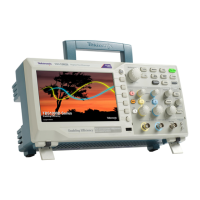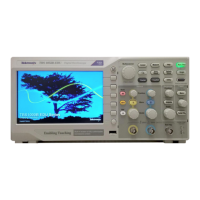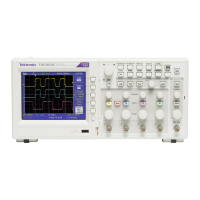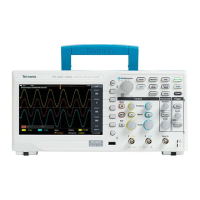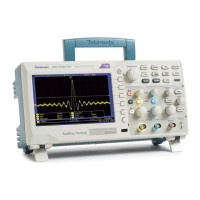Triggering
The trigger determines when the oscilloscope starts to acquire data and to display
a waveform. When a trigger is set up properly, the oscilloscope converts unstable
displays or blank screens into meaningful waveforms.
Triggered waveform
Untriggered waveforms
For oscilloscope-specific descriptions, refer to the Operating Basics chapter. See
Trigger controls on page 14, and in the Reference chapter, see Trigger controls
on page 102.
When you push the Run/Stop or Single button to start an acquisition, the
oscilloscope goes through the following steps:
1. Acquires enough data to fill the portion of the waveform record to the left of
the trigger point. This is called the pretrigger.
2. Continues to acquire data while waiting for the trigger condition to occur.
3. Detects the trigger condition.
4. Continues to acquire data until the waveform record is full.
5. Displays the newly-acquired waveform.
NOTE. For Edge and Pulse triggers, the oscilloscope counts the rate at which
trigger events occur to determine trigger frequency. The oscilloscope displays the
frequency in the lower right corner of the screen.
Source
You can use the Trigger Source options to select the signal that the oscilloscope
uses as a trigger. The source can be the AC power line (available only with Edge
triggers), or any signal connected to a channel BNC or to the Ext Trig BNC.
Understanding oscilloscope functions
TBS1000B and TBS1000B-EDU Series Oscilloscopes User Manual 21
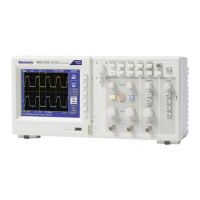
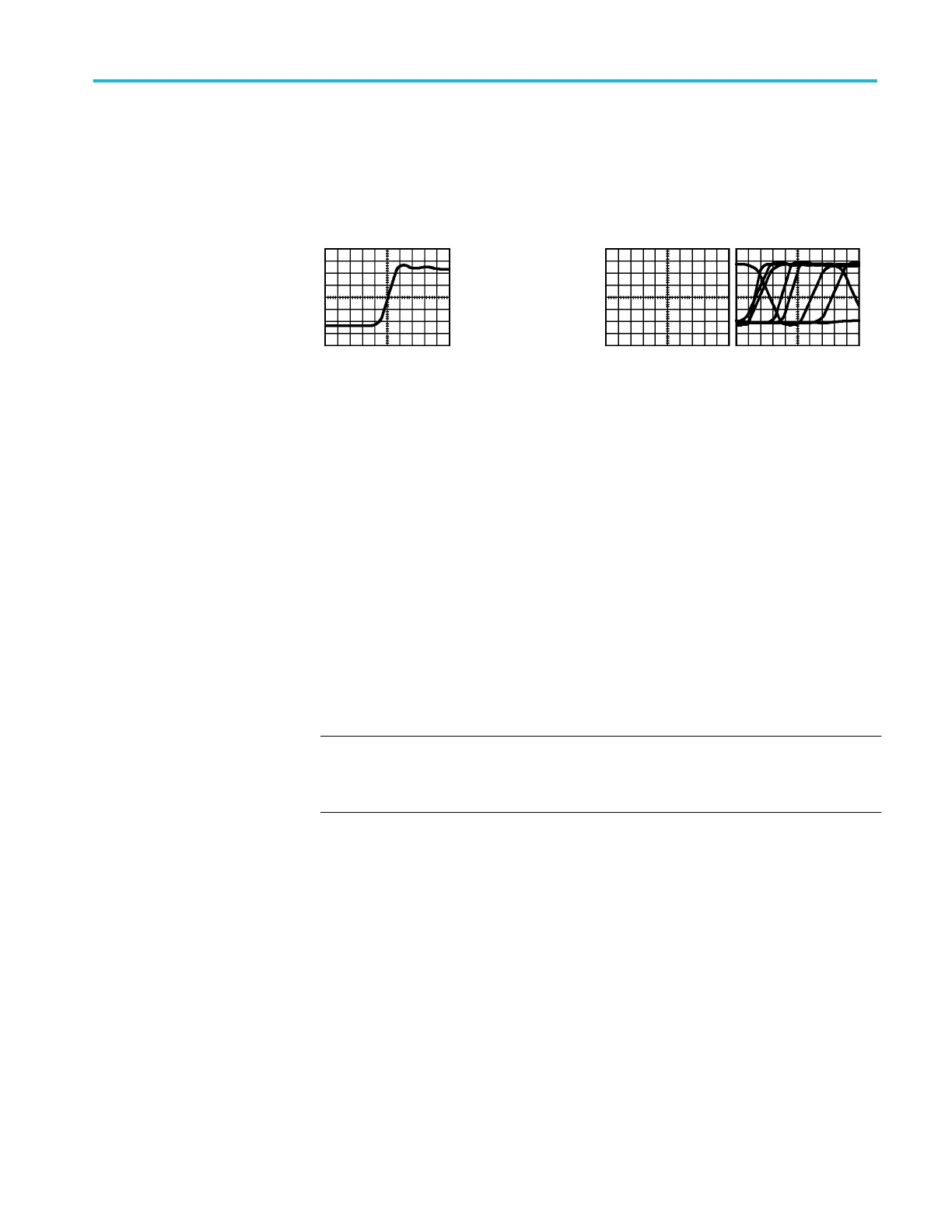